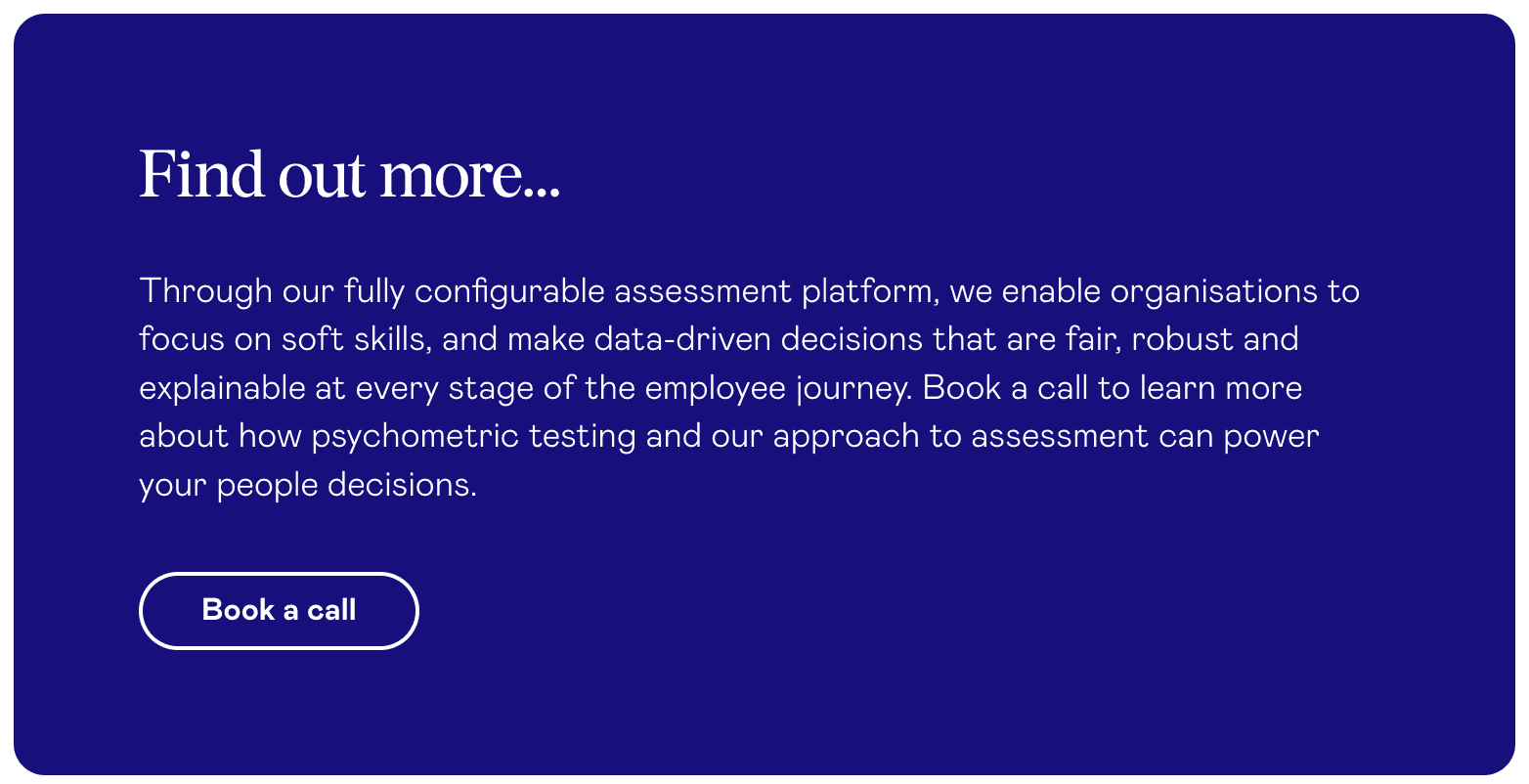Take a sneak peek of the product with an interactive tour | View now
Putting the ‘Human’ Back in HR Tech: Takeaways from HR Tech 2022

Artificial intelligence (AI) has been at the forefront of HR technology conversations for a long time, but this year, there’s been a noticeable shift. HR tech vendors are redirecting their focus to the “human” part of HR, which is a welcome transition.
AI is still in the conversation, but now we’re talking about what AI can do in an ecosystem focused on people. Vendors are beginning to recognise that AI is a component of the solution, not the solution.
This is a trend that tracks with everything I saw at this year’s HR Tech Conference & Expo in Las Vegas. While walking the expo floor, I noticed the focus shifting to products that are designed to put people first by providing data-focused insights into the human side of talent (i.e., talent intelligence) and fostering engagement across almost every touchpoint a company has with its humans.
These trends underscore that the future of HR technology is as a people-centric resource.
Better Capabilities Equal Better Talent Outcomes
For decades, HR leaders have been mapping the skills of individual employees alongside skills needed for jobs in the organisation. Vendors are seeing a greater need for tools to assist with this process — and they have begun to deliver.
For instance, I saw new skills development and career navigation tools that allow candidates and employees to inventory their skills and experiences, and to complete assessments to help verify and provide meaningful feedback on them.
When combined with a lexicon or taxonomy of what skills are most needed for jobs and career paths, these tools provide a powerful way for organisations to manage their talent.
These tools use the data they accumulate to help employees understand their own path to their career goals, and by helping the company understand who is ideal for those roles they also create a meaningful two-way conversation.
HR tech is making skills management and career journeys all possible at scale — the ability to almost effortlessly match employees with ideal roles, close skills gaps and help people to better understand their roles in the process has been talked about for a long time, but tech has simply not been up to the task.
Is Candidate Relationship Management the New ATS?
Many vendors are pitching candidate relationship management (CRM) tools as a modern alternative to the traditional applicant tracking system (ATS).
There are advantages to CRMs: They’re more lightweight than an ATS and provide a branded touchpoint earlier in the process. However, CRMs have drawbacks because they represent a relatively new mindset that is still evolving and because there are simply some parts of what an ATS does that cannot be removed from the process (i.e., certain data must be collected early on to move a candidate forward in the hiring process).
CRMs often use rudimentary or AI-based functions for matching applicants to jobs, and without the teeth provided by reliable science based measurement tools, they are leaving value on the table. There is a massive opportunity for assessment science to evolve these platforms forward. They inject an opportunity to collect objective data that can assist both applicant and employer in navigating the hiring journey.
Augmenting the Human Touch With Tech
In addition to a focus on the “classic” HR processes (hiring, performance management and succession planning), HR tech continues to find new and interesting ways to support the human side of workforce management. Psychology is playing a vital role in the development of new tech tools in the wellness space and other areas where mental health converges with work. In each passing year at HR Tech, I am seeing more and more tools designed to provide employees with mental and physical wellness issues such as movement, mind and body connection, relaxation and counselling assistance.
Helping employees be human is essential to winning the talent game, and vendors realize that they can help provide employers with tools to recognise that psychology’s value isn’t limited to assessment.
Platforms Are Overtaking (and Absorbing) Point Solutions
There’s a growing interest in platforms over one-off point solutions. Platforms are now pushing their ecosystems and making it easier to integrate point offerings.
Platforms are in some sense becoming a new kind of point solution — offering a variety of individual functions that can be configured differently for various use cases. Because the data collected from each of these individual points is captured in one central place, platforms create new opportunities, efficiencies and insights.
No matter what the functional area of HR some platforms provide new levels of flexibility and support via the integration of smaller bites. Even better, it is now easier for platforms to connect across functional areas — evolving the value proposition even further.
Despite the plethora of HR tech tools present at the expo, a few trends were noticeably absent — specifically those related to Web3. In the future, I fully expect to see HR tech using decentralisation, smart contracts and blockchain technology. But there is still a good deal of time before we can expect to see these things saturating the HR tech landscape.
Altogether, I’m happy to see the human focus re-emerging in HR tech. When HR tech is designed with people in mind, it can better augment HR’s efforts to support the workforce and drive the business forward.
